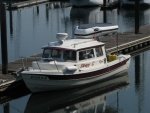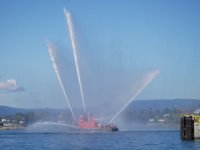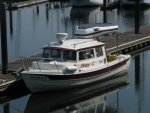Larry Patrick
New member
Packed up truck and boat with everything for launch and putting boat in slip for the season.2.25 hrs drive,Cayuga Finger Lakes. Always packing seems to take forever. Wife backed trailer in ,I took boat over to slip,backed into assigned slip.My last boat 19ft Montauk with fly by wire controls was so smooth between neutral green light came on in neutral ,forward and reverserse. Just bumping it in and out of gear was easy and smooth ,easy to go slow . Finding the 150 Yamaha a little more agrresive when throttling in and out of gear,wonder if there is anything that would make it smoother,the idle seems correct. Maybee it is just the way it is ,not sure ,any suggestions?Anyway met a lot of nice couples on pier ,wife wrote down about ten couples names to try to remember them next time. Took boat out couple miles anchored out .jumped in for a swim,50 degree water shocked me back into boat pretty fast 300ft lake takes a while to get to swimming temp. Received about 3 compliments on boat,one guy with a 27ft sea scape always wanted one he said. I was thinking with all that space and nice looking boat surprised he said that. Were the smallest boat on pier. People want to help you grab a line to make getting in slip easier a lot of friendly folks. We got caught in a thunder storm headed for slip with wipers on,spent 2 nights there. Went to restaurants in Ithaca in evenings. Thunder storms rocked the boat some last night,wife felt it even later in day like she was on boat. Left boat plugged in with auto bilge on, just incase since its not self bailing. Put slanted cover on to shed water. Does anyone usually leave their auto bilge on,or rely on water not getting into boat with canvas? Trying to get organized to have things tucked away and have open space,looking forward to next weekend,and try some trolling landlocked salmon and lake trout.



